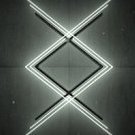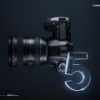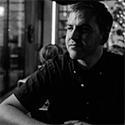Leaderboard
Popular Content
Showing content with the highest reputation on 10/17/2013 in all areas
-

So where does one start the learning process
deckitout and one other reacted to HurtinMinorKey for a topic
Watch videos that you like, take notes about the angles, length of shots, camera movement, and editing. Try and emulate what you see. This requires research. I think learning by doing is the best.2 points -

My new pocket anamorphic set
Matthias Malleši� reacted to Sebastien Farges for a topic
Hello everybody, here is my new anamorphic set ! :) baby Berthiot Hypergonar anamorphic 1.75X lens Qioptiq Linos MeVis-C 35mm f1.6 C-mount lens I've order a special machined step up flat ring, then unscrew from the C-mount lens the ring that maintains the glass, then replace by the flat ring. I've screwed the original Berthiot small clamp, then screw and aligned the anamorphic. This combination of these two lenses seem to be very promising. Sharpness and no vignetting :) Here is the set and two pictures taken with it on my OMD (video is coming soon). Thanks for your attention. http://www.flickr.com/photos/43243778@N04/sets/72157636631334626/1 point -
Latest music video: Anamorphic zombies on hacked 50d
JohnBarlow reacted to OzNimbus for a topic
Shot this in 3:2 on the 50d running magic lantern raw with the Bolex anamorphic lens. The 50d was a real pain to work with, the firmware is still fairly unstable & would usually take several tries on each shot to get the camera recording "continuous." There have been a few firmware updates since this was shot & that seems to have stabilized things a bit, but it's not rock-solid reliable yet, IMO. Anyway, the raw video was nice to work with in post: Tons of latitude & just plain good looking. The 3:2 aspect worked perfect with the Bolex as it's a 1.5X squeeze. Enjoy! http://youtu.be/cCERCFJBKCE1 point -

Anamorphn't!
Sean Cunningham reacted to jgharding for a topic
Wes has begun the rebellion! http://www.youtube.com/watch?v=1Fg5iWmQjwk1 point -

Bizarro world mirror image of this forum
Zach Ashcraft reacted to mtheory for a topic
People complain about EXTRA pro features? Amazing...1 point -

Anamorphn't!
Tito Ferradans reacted to Sean Cunningham for a topic
Not sure what you mean by "rebellion" but the film is reportedly shot in three different aspect ratios, each for a different time period: 1.33:1, 1.85:1 and 2.35:1 Looks marvelous.1 point -
Shoot, take it home, edit, grade, ask for honest feedback and don't get defensive, then back to the top of the list. Repeat until death! Break down you favorite works into pieces and analyse them bit by bit. Try to recreate some shots with whatever you had, this adds to your toolbox and creative lexicon. You will understand better why certain things are done. Don't get distracted too much by kit, though of course we love it, it doesn't do anything without your idea, it just acts as an expensive dust trap. But do earn the equipment and techniques so they become second nature, then begin to feel more expressive. When all of these techniques become part of your creative language, you no more have to think about them than having to think for ten minutes to form a sentence in English, it's on the tip of your tongue. Just as an expressive guitar solo comes when there's no distance between emotion and the movement of fingers... Don't get bored by rules of thumb, if they're pissing you off, break them, then try again using them, then break them again. Which do you prefer? In what context are rules useful touch points and where are there not worth while? IE: "Jello is bad". Try a shot using jello excessively. In what creative context would this add the piece? (a police chase in a gritty film?) in what context would it remove from the piece? (an emotional scene over dinner in a formal drama?). Repeat with other rules of composition, exposure, so on. Find examples of common rules broken in popular works and see why they work or otherwise. You'll end up agreeing with most rules, but more importanly you'll know when to break them. Most important of all (I think) is to set yourself a real task with a deadline. If you just make abstract tests you won't challenged and you'll get bored. Make a short film in 3 days, then lay into it critically. Don't just ask the three Fs: friends, family and forum. Get feedback from odd places either online or real life, find people who are truthful. Do another in a couple of weeks after watching more films and reading more books and interviews with those you admire. You should improve a lot then. That's just a few things I do/have done! I hope it helps!1 point
-
This video illustrates the biggest flaw of the bmcc perfectly
KarimNassar reacted to Axel for a topic
With raw photography, with a conservative exposure, 'ETTC', you also get a misrepresantation and end up in having to change the exposure in post and eventually reduce some noise. Why? Because what we have here is a 12-bit image. Without any curve applied to the quantization (for the preview!), an 8-bit image can only show less than 5 stops of latitude (256-128-64-32-16, anything below 16 becomes indistinguishable on any common 8-bit display, and in reality none can show values above 240 as well). This is an extremely low dynamic range, and even with a new tone-mapping, the values visible then are a fantasy and by no means represent the true relation between, say, 1354 and 11433 (just above 3 stops in the infathomably depth of 12-bit). What we are demanding when we call the washed-out images a 'flaw' is effectively a display with an upstream LUT to let us see an incorrect, very much compressed image that we are used to in our tiny 8-bit universe. Something like this is probably built into an Alexa or the like. The workaround to shove the ISOs down also (in the preview) just grabs a very narrow range of what we actually record. The same is true for external devices, if their monitoring is not capable of processing 12-bit raw (which is?), for whatever reason, like Germys Atomos Samurai, which would be suitable for 10-bit, for which the built-in histogram should be reliable, but of course not any LCD viewer. As a digital projectionist from 2000 until 2011, I very often compared the MJEPG2000 DCPs (typically 12-bit) to my own 8-bit ambitious amateur stuff. And no matter if I had used opendcp to convert it or just plugged a laptop to the scaler, the differences were huge. It never was an issue of spacial resolution! Three deliberately provocative theses on where we stand with our appreciation of raw: 1. All DSLR bodies have a lot of knobs, buttons and dials as well as complicated menu options and presets. All of these gadgets are phony ways to cripple (potentially) high quality images to some pleasing-looking consumer-jpegs or mpegs. White balance, ISO, looks for different conditions: Crooks! There are two things that count, and neither of them live in the camera's body: Focus ring, aperture ring (EDIT: Well, one: 'shutter'). 2. We still record, grade and view in 8-bit. To shoot raw in order to get a better 8-bit video seems comparable to killing a whale for a cup of cod liver. And we hunt the whale with blindfolds. 3. ETTR will have highlights and some midtones. That the graded images look naturalistic although there are no real shadows could very well be limited to 8-bit. Germy1979 wrote: Unfortunately, afaik, Neat can not neat raw video. Removing noise (useless, redundant data) should be the first step. To do everything right, there is probably no alternative for the BMPCC buyers to buy a full version of Resolve as well. Or ETTR for 8-bit.1 point -

What camera should I get for filming protests and blogging?!?!?!
jgharding reacted to Zach Ashcraft for a topic
Agreed - RX100 or the RX100 mk2 seem like a perfect choice to me. I've used this at concerts, airports, etc. where my dslr would otherwise not be allowed. Image quality is great, and plenty of functionality. Right in your price range1 point -
omg....france is covered with chemtrails !1 point
-

A look at the new video features of the new Sony A7, A7R and RX10
gloopglop reacted to Andrew Reid for a topic
If they are doing on the new full frame sensors the same as on the RX10's new 1" sensor then video is going to be amazing. The RX10 does a FULL READOUT producing 20MP 6K raw stream at 60fps. The new Bionz X as featured in the A7 and A7R is powerful enough to then subsample that 6K down to 1080p before writing it to the card. That means no moire or aliasing, no line skipping on the sensor, no great loss of dynamic range from a poorly subsampled sensor output. If your credit card is not ruined by now it may well be when the RX10 sample videos start trickling out.1 point -
So where does one start the learning process
deckitout reacted to Bioskop.Inc for a topic
This is a good book to start with: Cinematography: Theory & Practice by Blain Brown Used to be on the reading list when i lectured at University, it also includes a DVD. If you'd prefer a blog then take a look at the mass of useful info here (a Hollywood DP): http://www.hurlbutvisuals.com/blog/1 point -
buy Andrew Reeds GH2 shooters guide ebook off this site , it has a big section on basic filming techniques and will be very useful to you as it inclides tips on how to set up your camera - yes its a GH2 book but the basic set up and filmimg principles apply to any camera http://www.eoshd.com/gh2-guide-book1 point
-

Sony A7 and A7r promise improved full frame video
Zach Ashcraft reacted to Jordan Drake for a topic
I've shot with the A7 for a full day, you can see the video here: http://www.youtube.com/watch?v=bnvgceTEV3c Looking at the image afterwards though, I'm not as excited as I initially was. I loved the process of shooting with the camera, but the image quality is pretty wanting. As you can see on the video above, the image is quite soft, and moire is visible in many shots. Hopefully, this can be chalked up to pre-release firmware, but we permitted to judge the video quality based on the models we had, and I'm not delighted with the results. Once the production cameras come out, I'll post a follow up to the above video with my revised opinions.1 point -
I don't use the multiplier on the F-stop when it comes to speaking about low light ability. F1.8 is F1.8! And it is easier just to take it as given that with a smaller sensor you won't get as shallow depth of field as you will on full frame. Crop factors are only useful in terms of describing the field of view. Everyone in the DSLR video world thinks in terms of full frame. A 28 is a wide, etc. People in the movie industry don't think like that, they go in terms of Super 35mm and a 18mm is wide on a movie camera.1 point
